
WHEN the mighty 1VD-FTV was introduced in 2007, 4WD circles were plagued with rumours of high oil consumption and injector problems straight out of the box.
This was spurred on by the distrust of common-rail injection technology, with the early 3.0-litre Patrols dropping like flies. The prejudice continues to this day – just check out the second-hand market prices of same-year 3.0-litre and the old-school, mechanically injected 4.2-litre Patrol.
Over the past decade, the Toyota V8 diesel – in either the twin-turbo version found in the 200 series, or the single-turbo perched between the guards of 70 Series workhorses – has built an enviable reputation for both Toyota-spec reliability and a torque curve that feels like it’s cresting Mount Everest. If there’s a better caravan-tug engine in Australia, I certainly haven’t driven it!
 What you won’t hear, and especially of the single-turbo version, is the blinding acceleration. In fact, when the single-turbo was introduced, it had exactly the same peak power and torque of the straight-six diesel (1HD-FTE) it was replacing. So, how can you change your stump puller into a potential winner of the traffic-light grand prix?
What you won’t hear, and especially of the single-turbo version, is the blinding acceleration. In fact, when the single-turbo was introduced, it had exactly the same peak power and torque of the straight-six diesel (1HD-FTE) it was replacing. So, how can you change your stump puller into a potential winner of the traffic-light grand prix?
ENCOURAGING AN ENGINE TO MAKE MORE POWER
THE diesel engine in its simplest form is a very rudimentary engine. There’s no throttle to control engine speed, there isn’t even an ignition system to light the compressed fuel mixture in the combustion chamber.
Instead, it relies on a high compression ratio (the ratio the piston compresses the air/fuel mixture in the combustion chamber and cylinder) to get the air hot enough to ignite it.
Petrol engines typically have a compression ratio of around 10:1, whereas 20:1 is nothing unusual in a diesel engine. In the case of Toyota’s V8, it’s 16.8:1, and the higher the compression ratio, the more efficient the engine is.
Additionally, diesel has more energy content than petrol, with diesel coming in at 35.8 MJ/L (megajoules/litre) versus petrol at 34.2 MJ/L. If that doesn’t make you want to go out and buy a diesel, this might: At part throttle, a diesel engine will require less fuel than a petrol donk.
Finally, as diesel is a great lubricant in comparison to petrol, you’ll lose less power to internal engine frictional losses, and those loses can account for up to 30 per cent of the potential chemical energy produced by the diesel.
The internal-combustion engine is essentially an air pump, and the more efficient you can make that pump, the more likely you are of winning the traffic-light GP.
HOW DOES A TURBOCHARGER HELP PRODUCE MORE POWER?
AS WELL as frictional losses, the engine loses around 30 per cent of the energy released by the diesel straight out of the exhaust (it’s a wonder there’s enough left to turn the wheels).
A turbocharger will enable you to recover some of that wasted heat. The motion of the exhaust gases, in combination with the wasted heat, is used to spin a turbocharger exhaust turbine (effectively a metal windmill) that is then connected by a shaft to the inlet turbocharger compressor wheel.
This, in turn, compresses the inlet air, artificially cramming more oxygen-laced air into the combustion chamber, and, if there’s enough fuel, you’ll get more power. The side effect of compressing the air is heat, and hot air takes up more space than cooler air, leading to less dense air and less power; though, there is a way to combat power-sucking heat.
INTERCOOLERS
INTERCOOLERS or, more correctly termed, aftercoolers, work on the thermodynamic principle of convection; that is, one fluid (air or water) moving energy. In this case, it’s in the form of heat away from the source of energy (compressed heated intake air). It’s actually a little more involved than that, but for our purposes, it’s close enough.
Air travelling into a bonnet-mounted scoop, as the car is moving forward, is at a greater pressure than the air in the engine bay. This allows the air to flow through the intercooler, taking some of the heat generated in the intake charge caused by the turbocharger through the intercooler to be dissipated to the atmosphere.
A cooler and therefore denser air intake charge will contain more oxygen, therefore producing more power.
 It works on exactly the same principle as an engine’s radiator. However, there is a common misconception that painting or colouring an intercooler black will increase its efficiency.
It works on exactly the same principle as an engine’s radiator. However, there is a common misconception that painting or colouring an intercooler black will increase its efficiency.
It is true that a black object will shed heat via radiation more quickly than bare aluminium surface, but when you flow cooling air through the intercooler, benefiting from the convective heat transfer capabilities of the intercooler, the layer of black paint acts as a thermal insulator. It actually reduces the heat transfer to the atmosphere.
This leads to a hotter, less dense charge and less power is produced.
As well as air-to-air intercoolers, water-to-air units are available. Water is able to shift heat more efficiently than air, so the intercooler can be smaller; though, you’ll still need to get rid of that heat somewhere, and that duty is usually the job of a dedicated additional radiator. There is also the added complexity of pumps and water lines.
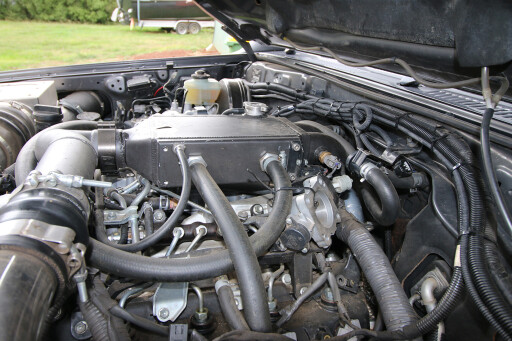 If that wasn’t bad enough, some of the standard emission equipment not only clogs up your intercooler, but your intake manifold as well.
If that wasn’t bad enough, some of the standard emission equipment not only clogs up your intercooler, but your intake manifold as well.
WHERE DO YOU START?
WHILE the standard snorkel head might be great at stopping the dust, it’s doing you no favours when it comes to helping the big V8 breathe.
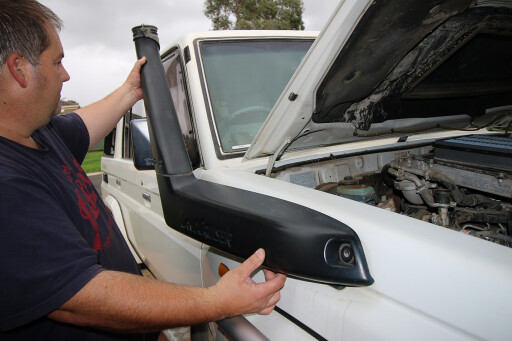 We took a near-standard 76 and, over the process of a day, went from the standard ‘raised air-intake’ to a full aftermarket snorkel with ram head, taking pressure measurements every step of the way. All testing was done in fourth gear, using WOT acceleration runs from 60-100km/h.
We took a near-standard 76 and, over the process of a day, went from the standard ‘raised air-intake’ to a full aftermarket snorkel with ram head, taking pressure measurements every step of the way. All testing was done in fourth gear, using WOT acceleration runs from 60-100km/h.
| INDUCTION | HO RESTRICTION | % IMPROVEMENT |
| Standard Snorkel and Top Hat | 16.64 | 0 |
| Standard Snorkel No Hat | 7.26 | 56 |
| Standard Snorkel Ram Head | 3.6 | 78 |
| Aftermarket Snorkel Ram Head | 3.1 | 81 |
From the test data above, it’s easy to see the standard Toyota hat is strangling the engine. Secondly, look at the difference between the ram head and an open snorkel.
It should certainly convince punters not to get a backward-facing stainless drainpipe snorkel in place of a proper ram-head-equipped one. Finally, there wasn’t a large gain in going for the aftermarket snorkel in terms of airflow alone.
However, having pulled the standard ‘raised-air intake’ apart, there are many sections sealed with only a thin strip of foam, not only at the join at bonnet height but also further down just before the air box.
 If you intend to do a deep-water crossing, replace the ‘raised-air intake’ with a proper aftermarket snorkel – there are too many ways for the water to get into an expensive engine otherwise.
If you intend to do a deep-water crossing, replace the ‘raised-air intake’ with a proper aftermarket snorkel – there are too many ways for the water to get into an expensive engine otherwise.
FILTER ELEMENT AND AIR BOX
IN TERMS of airflow alone, there’s no discernible additional restriction caused by either the filter (standard or good quality aftermarket) or the standard air box to at least 250kW at the wheels. There are, however, reports of dusting of the clean side of the air filter, primarily due to the seal in very dusty environments.
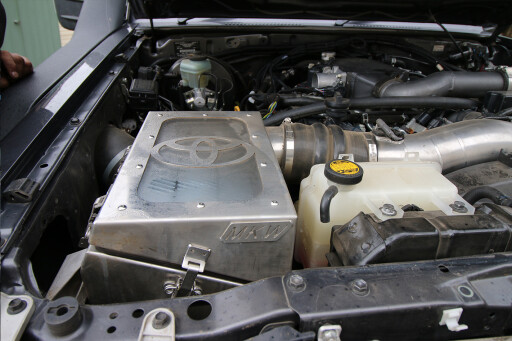 There are many DIY fixes as well, ranging from a bead of sensor safe silicon set to the top of the filter, to a full aftermarket air box – such as the one pictured that clamps down hard on the filter element.
There are many DIY fixes as well, ranging from a bead of sensor safe silicon set to the top of the filter, to a full aftermarket air box – such as the one pictured that clamps down hard on the filter element.
FEEDING THE TURBO
The air box flows well, but the same can’t be said for the crossover pipe from the air box to the inlet of the turbocharger, as it really necks down just before the turbocharger inlet.
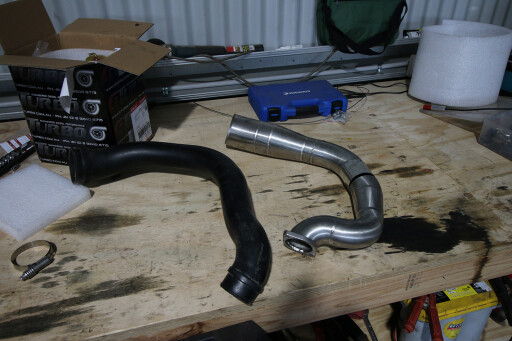 An aftermarket one, such as the one pictured, will give your turbocharger a fighting chance. On average, it’ll give your rig an extra 10kW at the wheels for any turbo low-mount set-up.
An aftermarket one, such as the one pictured, will give your turbocharger a fighting chance. On average, it’ll give your rig an extra 10kW at the wheels for any turbo low-mount set-up.
THE TURBOCHARGER
THIS is where all the magic happens for the 1VD. Both the 70 and 200 Series use variable geometry turbos (VGTs), also known as variable nozzle turbines (VNTs), the difference being the 70 Series has one turbocharger and the 200 two.
VGTs don’t utilise a traditional waste gate, which is a valve able to bypass the exhaust gasses past the exhaust turbine wheel, to control the speed of the turbo and therefore the level of boost.
They use a series of movable vanes located around the periphery of the exhaust turbine that are able to direct either more or less exhaust gasses through the exhaust turbine. The advantage of this is that, at low speed, the turbo is able to act like a smaller turbocharger, with the boost coming on sooner in the rev range.
Then, at higher rpm, the vanes can bypass more of the exhaust gas, allowing continuous boost higher in the rev range. This leads to a much wider torque output and comes close to eliminating dreaded ‘turbo lag’.
The 70 Series VGT is controlled by the vacuum produced by the engine, and the 200 Series VGT is controlled by the ECU. Anyone who has driven both the standard 70 and 200 will attest to how much better the twin VGT ECU-controlled set-up is.
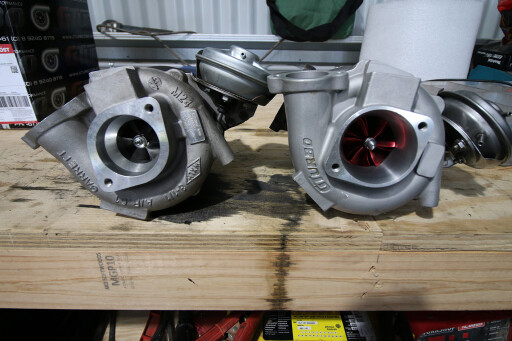 However, if you’re looking for better torque output from your 70 for towing a caravan or the like, the aftermarket has the answers you’re looking for and they’re only a phone call away.
However, if you’re looking for better torque output from your 70 for towing a caravan or the like, the aftermarket has the answers you’re looking for and they’re only a phone call away.
The standard single turbocharger is reputably good all the way up to about 22 psi from a standard boost figure of around 8psi. This will see a sizeable increase of power and torque.
If you’re looking for more performance than a standard turbocharger can provide, the aftermarket can almost accommodate you as quickly as you can whip out the credit card. A ‘high-flowed’ standard charger can replace the cross shaft with a larger 8mm version (up from 5mm), as well as aftermarket exhaust turbines and compressor wheels and their respective housings.
How to change your Differentials oil
You’ll get more boost, with many ‘high-flowed’ turbochargers for the 1VD capable of an efficient 32psi. To gain the extra top end, however, you’ll compromise bottom-end lag. At this stage, the standard intercooler is having trouble with both the flow and heat produced by the upgraded turbocharger. So you’ll need to start looking toward the aftermarket.
Steve Booth from Power Torque Victoria pointed out: “The factory intercooler cools pretty well up to about 22 pounds of boost. After that it’s found a little wanting.”
FUEL INJECTORS
THE standard injectors will fuel your rig right up to about 200kW at the wheels. If your power goals are in excess of 200kW, you’re able to source +30 per cent, +50 per cent and +70 per cent, though at these levels your pockets better not be empty, as they’ll cost you around $4000-4500 fitted.
EMISSIONS
CRANKCASE GAS RECIRCULATION
AS PART of the emissions used on modern engines, the combustion gasses that blow past the piston rings can’t be vented to the atmosphere and are plumbed directly into the inlet before the intercooler. While it’s a great idea to recycle the gasses, unfortunately atomised oils are carried into your intercooler as well.
Thankfully, you can easily and legally do something about it. Simply plumb the crankcase gas via a catch can, as the filtering system condenses the airborne atomised oil, which needs to be periodically emptied.
Steve Booth said: “The oil running back through the intercooler (from the CGR) creates a thermal barrier, making the intercooler less efficient.”
EXHAUST GAS RECIRCULATION (EGR)
EGR was introduced to combat Nitrogen Oxide (NOx) emissions. Introducing burnt exhaust gases into the inlet reduces the combustion chamber temperature, leading to less NOx out the tailpipe.
Unfortunately, in a diesel, introducing exhaust gases into the inlet increases the particulate matter (primarily unburnt carbon) that is reintroduced via the EGR, working its way past the piston rings, acidifying the oil, and putting fine abrasive material in the oil to reduce the longevity of the engine.
Additionally, adding the exhaust gases reduces the specific heat ratio of the engine on the power stroke – the effect of this is that less power is able to be produced. To combat the increased particulate matter, manufacturers have introduced particulate filters. If the vehicle is to be used strictly off-road, without having to maintain registration, an ECU remap can integrate turning off the EGR valve.
DIESEL PARTICULATE FILTER (DPF)
AS A result of increased particulate matter, DPFs have been introduced on the latest versions of both the 70 and 200 Series, and they filter a large proportion of particulate matter from the exhaust stream.
Eventually, the particulate matter fills the filter to a point where it needs to be emptied – this is called ‘filter regeneration’. If the vehicle does plenty of stop-start driving, the filter may not reach a temperature where the ECU is able to regenerate the filter on the go.
Fortunately, Toyota saw fit to add a manual burn facility that can be activated by the user via a button on the dash.
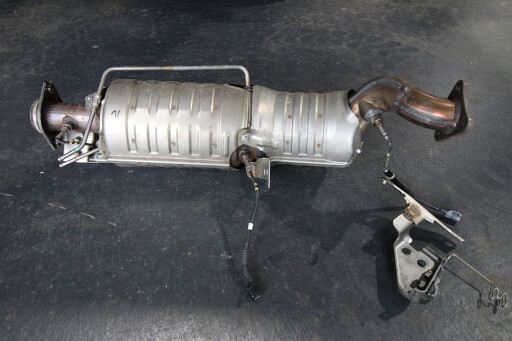 Unfortunately, the DPF provides a major exhaust restriction – decreasing power and increasing exhaust backpressure that hurts the performance of the turbocharger and increases fuel consumption. As usual, the aftermarket is leading the way with performance alternatives. Just as when catalytic converters were introduced along with unleaded fuel all those years ago, there were cries of the end of performance modifications.
Unfortunately, the DPF provides a major exhaust restriction – decreasing power and increasing exhaust backpressure that hurts the performance of the turbocharger and increases fuel consumption. As usual, the aftermarket is leading the way with performance alternatives. Just as when catalytic converters were introduced along with unleaded fuel all those years ago, there were cries of the end of performance modifications.
These days, a high flow cat is just a phone call away. In the not-too-distant future, the same will be the situation for the DPF.
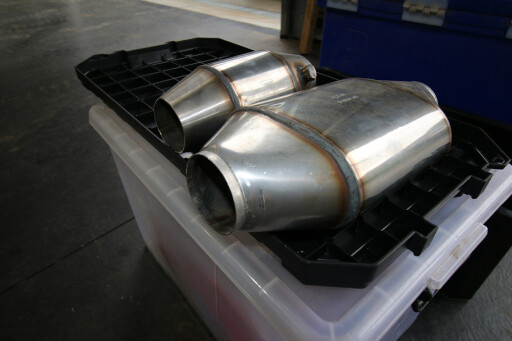 If your 70 is for off-road use only, DPF delete kits are already hitting the shelves. With an accompanying ECU tune, a DPF can be a thing of the past.
If your 70 is for off-road use only, DPF delete kits are already hitting the shelves. With an accompanying ECU tune, a DPF can be a thing of the past.
EXHAUST
BACKPRESSURE is every turbochargers nemesis. Anything you can do to reduce the backpressure experienced by the turbocharger will have positive gains. However, you’ll have to keep it quiet enough not to wake the neighbours when leaving home at 2am. The turbocharger goes some way to quieting things down, but you’ll still need to add a muffler to the equation.
A well-designed three-inch system using mandrel bends will suffice for all but the most radical builds. Four-inch systems are available; though, in reality, adds little to the power output. They do, however, cost twice as much; though some prefer its slightly different note.
The crossover pipe that feeds the right cylinder bank’s exhaust to the turbocharger is very restrictive as well; though, you can’t see it from the outside, where the flexible joints are extremely restrictive.
Again, it’s the aftermarket to the rescue, and several aftermarket vendors offer crossover pipes of around a constant 50mm diameter internally, including the flex joints.
Aftermarket exhausts will integrate an increased diameter ‘dump pipe’. This section of the exhaust pipe is of a larger diameter than the rest of the exhaust system (for example, the four-inch system will have a five-inch dump pipe), resulting in minimal restriction to the hot exhaust gasses exiting directly from the exhaust. This allows for a quicker spool, which means boost will build sooner under WOT.
WRANGLING PIXIES
WHEN it comes to tuning the ECU, there are a few options available to you. First, there’s the ‘ECU remap’, where the tuner re-writes the information on the computer that controls the car. Alternatively, an aftermarket chip can offer the driver multiple maps to suit the driving they’ll be doing.
You could have one map that’ll be tuned for economy, another which gives as much torque as possible low in the rev range for towing a caravan, and another that’ll raise the idle speed a few hundred rpm to increase the alternator output for winching. Look for a unit that has the ability to read the level of boost and can also read the throttle position – it’ll be more responsive.
The ability to ‘live tune’, that is, make changes to the maps parameters while the engine is running, will cut down on the dyno time versus the traditional process of writing to the chip with the engine stopped and then assessing the changes on the next dyno run.
More important than the hardware, though, is the person tapping away at the keyboard. Buy once, cry once is definitely the motto to go for here. Do your research, talk to other owners about their experiences with various tuners, and let them do their job. Cheaping out on the thriftiest quote will only lead to tears down the track.
PUSHING THE ENVELOPE
MOST owners will be amazed what a simple tune, chip, new exhaust or bumping up the boost will do. Your humble scribe drove Steve of Power Torque’s 79 with a remap exhaust and boost. It completely transformed the mid-range torque. Potting along at a little over 1500rpm in second gear, a simple press of the accelerator lit up a rear tyre!
 For some, there isn’t such a thing as too much power. How does 426kW and around 1100Nm at the wheels grab you? You’ll need aftermarket turbos, an inlet manifold and all the fruit that goes into a high-end build.
For some, there isn’t such a thing as too much power. How does 426kW and around 1100Nm at the wheels grab you? You’ll need aftermarket turbos, an inlet manifold and all the fruit that goes into a high-end build.
To get there, though, you’ll need cubic dollars and NOS. That’s right, at the bleeding edge of 1VD-FTV power output, tuners are using a 200 shot of N20 on the dragstrip. And, as they always say, if you have to ask how much, you probably can’t afford it.

COMMENTS